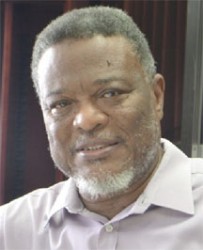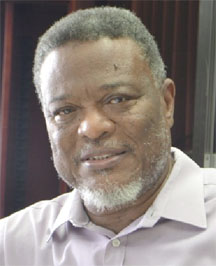With a recent audit finding that the Guyana Power and Light Inc (GPL) continues to lose millions to electricity theft, former Prime Minister Samuel Hinds has called for an analysis of distribution losses to be continually done and for the results to be made public to identify the problem areas.
Hinds says making the findings of the analysis public would put pressure on the residents of areas with the greatest percentage of electricity theft to be more vigilant and thus assist in reducing the number of overall illegal connections and electricity theft, which GPL has been battling for years.
“People have been hiding and doing their wickedness and it was hard to get the facts, but when you do this… and break it up in areas, it shows a wide variation and it creates pressure on the people in those areas with highest numbers,” Hinds, who was responsible for the energy sector during the PPP/C’s 23 years in government, told Stabroek News.
A 2013 GPL study had listed South Georgetown, served by Feeder 5 of GPL’s 29 countrywide feeders, as the area with the highest level of electricity loss, with the average monthly electricity losses being 60%.

It said the area with the second highest electricity losses was the East Coast Demerara, with losses at 43.9% within the Sophia to Coldingen area and 42.2% in ‘A’ to ‘E’ Fields in Sophia. Other areas with high losses included Coldingen to Bygeval, with losses pegged at 37.1%, North Sophia to Success with losses at 34.4%, and the area served by Feeder SF3, which includes parts of Prashad Nagar, Lamaha Gardens, East of Sheriff and South of Dennis streets, Norton Street, Princes Street, Tucville, Meadowbrook, Werk-en-Rust west of John Street, West La Penitence and part of Middle Road, with losses pegged at 37.4%.
GPL had stressed that all citizens should take heed and work to lower the losses reflected in their communities.
In late 2014, Hinds had come under fire for statements he made about the results of the report when he linked it to politics and suggested that the then opposition APNU try to get its supporters to pay their power bills.
“I call on [APNU] MP [Joe] Harmon to join me in bringing down the losses, the non-technical losses we are having… let us start leading our people into the right things. Let us not make ambiguous statements,” Hinds had said at the commissioning of a Ruimveldt substation, while citing the high losses in areas where he said Harmon had “political standing.”
And while then Opposition Leader David Granger had said Hinds’ remarks were stupid, GPL sought to substantiate his assertion, pointing to the 60% in losses in South and West Georgetown, which had 5,501 customers as compared with the 9.8% in losses in the area served by feeder VH-F3 (Vreed-en-Hoop to Windsor Forest) which had 7,104 customers.
Hinds said that he strongly believes that had the assessment of the distribution losses, which was part of an IDB study in 2014, continued, GPL would have been seeing by now a significant improvement in its non-technical loss reduction department.
“With the IDB project, they had 29 main feeders and could have assessed all with the help of the consultant calculations.
This was done on the technical and commercial level on each feeder and each you could clearly see what each feeder was doing or working over that time.
The Ruimveldt areas at the time electricity was extended, without the usual amount of cables, showed that the technical loss was high and also the commercial at 40 and 20 with a 60 percent total,” Hinds said.
“So, I really looking forward to us continuing using that system. I, in my last days as minister responsible for that sector, had great hopes that this publication of the data would try to generate pressure on areas and that in itself could have assisted in cutting some of these non-technical losses.
We need something like that because face it, the consultants came, they made many recommendations, said many systems were unbeatable but there are Guyanese that proved successful at beating all of these guys’ unbeatable systems. Guyanese people are good like that and they will persist until they find a way out of the most unbeatable system,” he added.
Hinds reasoned that when residents from a specific served area see the data reflecting their usage, they would become more vigilant in ensuring responsible consumption.
In this way, Hinds feels that GPL will also be able to develop a relationship with its customers and could see an increase in tips about electricity theft. “The people are the best watchers…we had a case over the West Bank where a child was electrocuted and the thing was that the people at the back [house] were reporting electricity theft time and time again but nobody was taking them on… all kinds of tips you could have because people want their areas to look good,” Hinds posited. “Yes I really believe they need to try this system once more.
The technology is there to get the data according to area and so on. I think this [Power Utility Upgrade Programme] should reexamine it…,” he added.





